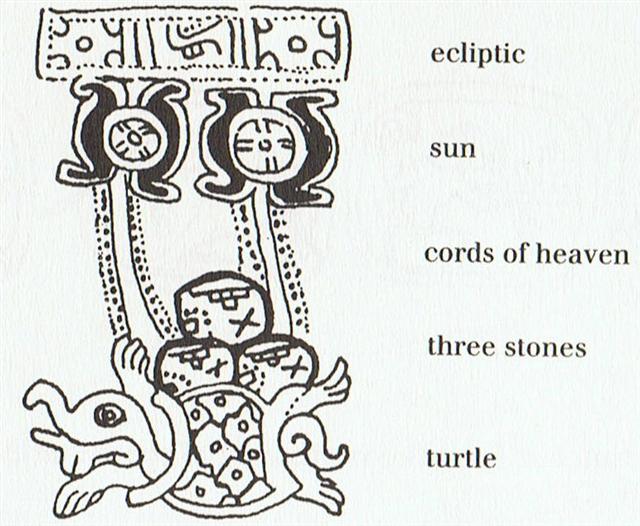3. The 7th glyph line is not yet over and done with:
Maybe Ana-mua is represented by mago in Ga7-16 and Ana-muri by vaha mea in Ga1-4:
The distance from Ana-mua to Ana-muri is greater than 181 days, and I have therefore imagined these important stars could be represented by more than 1 glyph each. And I have blackmarked their names in order to make clear that they are in 'antipodal' positions compared to Sun. Maybe the bent henua in Ga1-3 (a Saturday) illustrates the 'canoe of Sun'. The signs in the preceding tagata can be contrasted with the signs in Ga7-17. It will then be tempting to understand the peculiar arrangement in Ga7-18 (a Saturday) as an illustration of Tautoru from where a new 'fire' will be generated (cfr at Parehe):
And finally Sirius, the great star, will rise as possibly is illustrated in Ga7-20. The front side of the year will then leave quickly (Ga7-21) because of the solstice ahead.
If we should change my earlier guessed position of Sirius from Ga1-4 to Ga7-20, from glyph number 5 to a position 185 glyphs later, then the number of days between Ga7-16 and Ga7-20 should - according to my new ideas - correspond to the difference between 04h 33m for Aldebaran and 06h 46m for Sirius. The difference in rectascension, 2h 23m = 143m, can be translated into 143 / 1440 * 365 = 36 days, and we cannot, therefore, read these 5 glyphs as 'literally' describing the sequence of events between Aldebaran and Sirius. But it could be a description of how on the path of Sun Tautoru is followed by Ana-varu (Betelgeuze): The right ascention for Betelgeuze is 05h 52m and for Alnilam (the middle star in the Belt of Orion) it is 05h 34m. (52 - 34) / 1440 * 365 = 4.56 days. Mintaka will give the result (52 - 29) / 1440 * 365 = 5.82 days. The great fist held high in Ga7-20 could represent Ana-varu. I remember another name for Betelgeuze: "The star also was designated by various Arabian authors as Al Mankib, the Shoulder; Al Dhirā, the Arm; and Al Yad al Yamnā, the Right Hand, - all of the Giant ..." (Richard Hinckley Allen, Star Names. Their Lore and Meaning.) I also have a memory of reading somewhere that Mars was a god who had lost his right hand. If Ana-varu could be identified with Ga7-20, then the fist held high could represent the full hand of the giant, which like a little baby has the potentiality to grow into a full man. I.e., the lost hand of Mars (the giant) could correspond to Mercury. We can then also understand why the 'beak' of this Mercury person (who is the same entity as his hand held high in front) is formed like a little 'bulb'. Mercury is a split person, with one part belonging in late spring and the other in early autumn. His strength is not in spring but in autumn:
If we should decide to put Ana-varu at Ga7-20, then Sirius must be in a later position. The distance from Aldebaran is ca 36 days. 186 + 36 = 222:
|
||||||||||||||||||||||||||||||||||||||||||||||||||||||||||||||||||||||||||||||||||||||||||||||||||||||||||||||||||||||||||||||||||||||||||||||||







 .
.









